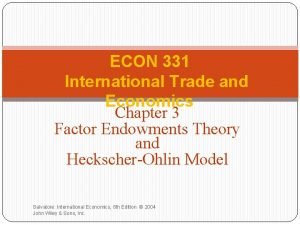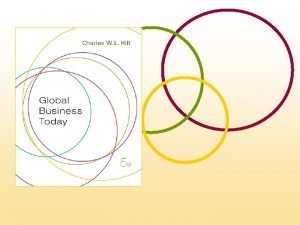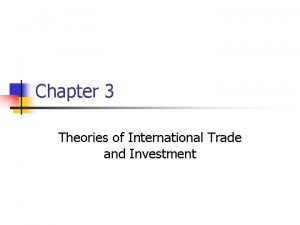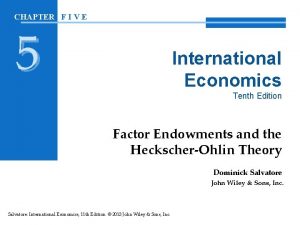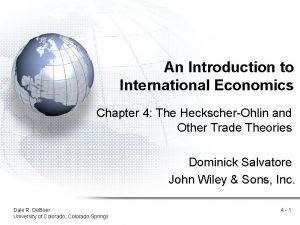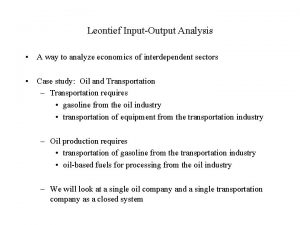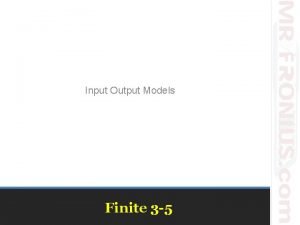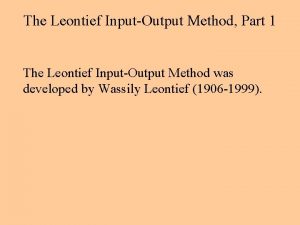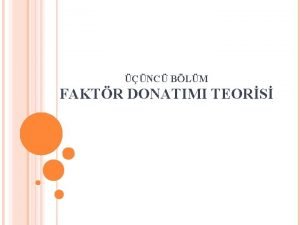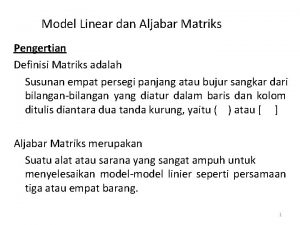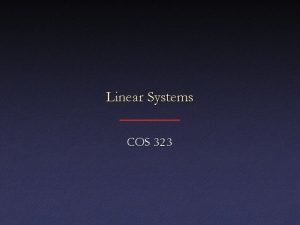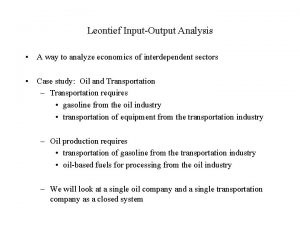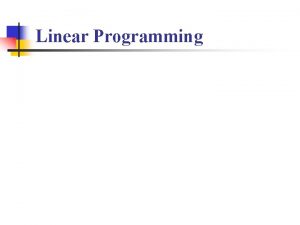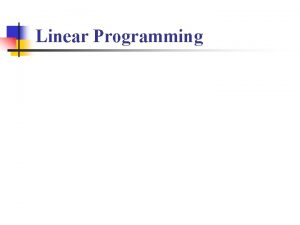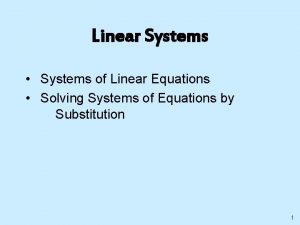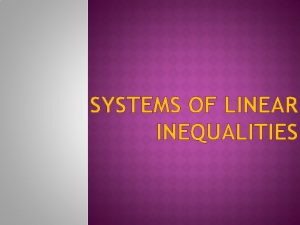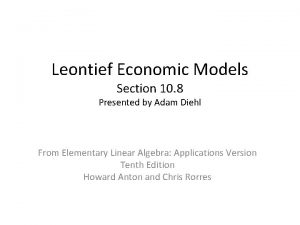The Use of Linear Systems in Economics Leontief














- Slides: 14

The Use of Linear Systems in Economics: Leontief Input-Output Models Math 214 Presentation Jenn Pope and Reni Paunova Professor Buckmire

Outline § Basics § Closed Economy Model § Open Economy Model § Linear Algebra Applications § Example § Practical Applications

Goal What quantity should each of the industries in an economy produce, so that it will be just enough to meet the total demand for that product?

Basics I Input I II Output III N II III N § C: consumption matrix § d: demand vector § x: production vector

Closed Leontief Model § Cx=0 § Diagonal entries can be >0 § aij = 1 C=

Open Model § § § Final demand primary inputs aij ≤ 1 (j= 1, 2, …, n) 1 - aij=value of the primary inputs needed to make a unit of the jth commodity x=d

Use of Linear Algebra Total Production—Consumption by Industries= Outside Demand X-CX=d => (I-C)X=d (I-C) = Leontief Matrix Ø If (I-C) is invertible, unique solution: x* = (I-C)-1 d =>production by each sector

System of Equations x 1 = a 11 x 1 + a 12 x 2 + … + a 1 nxn + d 1 x 2 = a 21 x 1 + a 22 x 2 + … + a 2 nxn + d 2 … xn = an 1 x 1 + an 2 x 2 + … + annxn + dn X= CX + Total = Consumption Production by Industries => Solve for d d + Outside Demand

… (1 -a 11)x 1 – a 12 x 2 - … - a 1 nxn = d 1 -a 21 x 1 + (1 -a 22)x 2 - … - a 2 nxn = d 2 … -an 1 x 1 – an 2 x 2 - … + (1 -ann)xn = dn => MUCH easier with matrices

Example Economy with Labor, Transportation, and Food industries • $1 L requires 40¢ in T and 20¢ in F • $1 T requires 50¢ in labor and 30¢ in T • $1 F requires 50¢ in L, 5¢ in T, and 35¢ in F ØHow much should each industry produce?

Solution

=> the production schedule should be $59, 200 labor, $64, 800 transportation, and $33, 600 food.

Practical Applications of the Model § Any size economy from a business district to the entire world § Most often used for city planning and analysis of our national economy § Government can predict a deeper recession when one industry shrinks =>subsidize industries

Thank you! Questions?
 Paradoxo leontief
Paradoxo leontief Leontief paradox theory
Leontief paradox theory The leontief paradox
The leontief paradox Factor endowment theory
Factor endowment theory Leontief paradox theory
Leontief paradox theory Leontief paradox theory
Leontief paradox theory Leontief production equation calculator
Leontief production equation calculator Closed leontief model
Closed leontief model Leontief method
Leontief method Teors
Teors Teors
Teors Faktör fiyatları eşitliği teoremi
Faktör fiyatları eşitliği teoremi Matriks leontief
Matriks leontief Hitunglah masing-masing koefisien masukannya
Hitunglah masing-masing koefisien masukannya Lý thuyết heckscher-ohlin
Lý thuyết heckscher-ohlin

